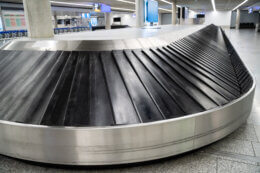
New research from Compare the Market has run the numbers to find out how much school holidays impact electricity bills from children’s screen use, and in Australia, it more than doubles.
In comparison to other Western countries, Australian school holiday screen time costs are some of the highest in the world.
Due to spending six hours a day away from home at school, children’s additional time on screen is estimated to cost an extra 133% compared to school day screen time at home, based on average usage figures and electricity costs.
Australian school holiday screen time use costs $130.14 per year, and all school term screen use combined totalled $67.61 per year. This means the average annual screen time cost in Australia is $197.75 per year.
The table below shows where Australia sits in comparison to six other Western countries. The United Kingdom had the highest costs at $377.27 a year, while the United States just barely beat Australia at $199.11.
| Country | Average cost of screen time per child all holidays (AU$) | Average cost of screen time per child all school days (AU$) | Average total annual cost of screen time per child (AU$) |
| United Kingdom | $245.83 | $131.42 | $377.27 |
| United States of America | $130.14 | $68.97 | $199.11 |
| Australia | $130.14 | $67.61 | $197.75 |
| France | $104.85 | $58.82 | $163.66 |
| New Zealand | $86.76 | $46.39 | $133.16 |
| Finland | $81.94 | $33.70 | $115.64 |
| Canada | $43.39 | $20.84 | $64.23 |
For parents wanting to minimise the impact children’s school holiday screen time has on electricity bills, there are some things you can do to cut down on costs.
- Set daily time limits for screen time that are enforced.
- Go exploring in the great outdoors and have a family adventure.
- With multiple children, encourage them to share the device and enjoy screen time together, rather than playing or watching separate devices.
- Encourage outdoor and indoor play that doesn’t involve screens.
- Go on outings and spend time together at local attractions.
- Break out the board games or activities that don’t get much use.
- If you’re on a time-of-use tariff where you pay more during peak periods, schedule screen time for off-peak periods.
- Break out the arts and crafts and get creative.
- If you have solar panels, set most screen time aside for when the sun is shining – while also balancing outdoor play and enjoying the sunshine.
- If you live in a region where you can choose between multiple energy plans, compare and switch to a cheaper plan.
Compare the Market’s Head of Energy, Meredith O’Brien, notes that children’s screen time is just one fraction of a family’s electricity bill, and switching to a better plan can have a massive impact on the cost of a bill.
“Other plans might simply have better tariffs and potentially help you reduce your electricity cost, not just for screens and entertainment, but everything: heating and cooling, laundries and kitchens, lighting, and more,” says O’Brien.
To view the methodology and learn more about the data, visit: https://www.comparethemarket.com.au/energy/features/school-holiday-screen-time-cost/
-END-
For interviews and more information, please contact:
James McCay | +61 450 930 374 | [email protected]
Compare the Market is a comparison service that takes the hard work out of shopping around. We make it Simples for Australians to quickly and easily compare and buy insurance, energy, and home loans products from a range of providers. Our easy-to-use comparison tool helps you look for a range of products that may suit your needs and benefit your back pocket.








